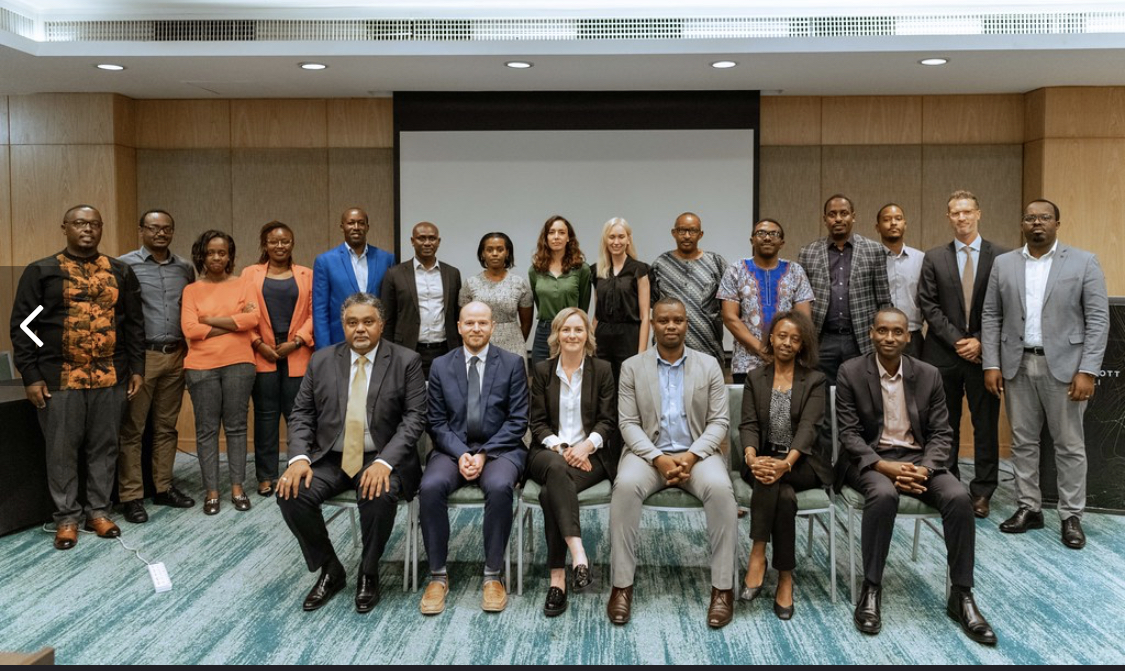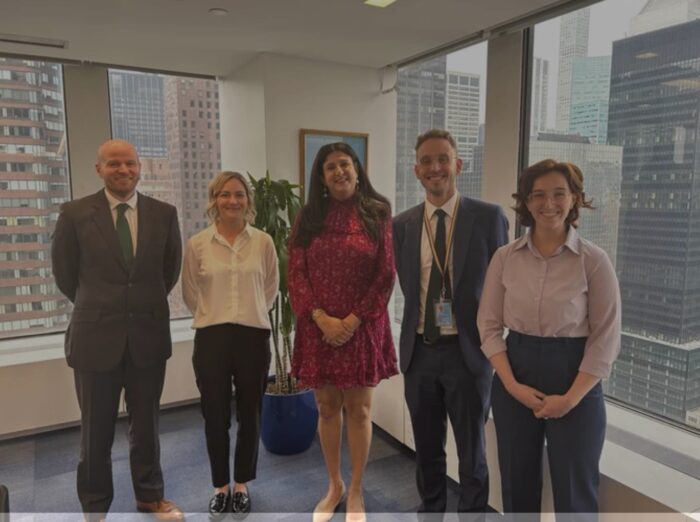Engaging with policymakers and practitioners: reflecting on our ESRC project

Professor Adrian Gallagher and Dr Helena Hinkkainen of the ECR2P reflect on three questions raised during their project on ‘Explaining Non-State Armed Groups Perpetrating Mass Atrocities’.
On June 30, 2023, our Economic and Social Research Council project ‘Explaining Non-State Armed Groups Perpetrating Mass Atrocities’ came to an end. In the final six weeks we held three workshops in London, New York, and Kigali which prompted questions from academics that we would like to respond to here, ‘how did you go about engaging with policy makers and practitioners? How did you identify them? Did you adjust your research for this audience, and if so, how?’
Prior to answering these questions, we offer a brief overview of the project as it helps contextualise what we were doing and who we set out to engage with. The study provides the first systematic data collection capturing 12 different types of mass atrocity crimes in six countries: the Central African Republic, the Democratic Republic of Congo, Iraq, Nigeria, Somalia and Syria. The crimes include enslavement, mutilation, imprisonment, torture, rape, forced pregnancy, sexual slavery, enforced prostitution, enforced sterilization, forced abortion and attacks on humanitarians and peacekeepers. For more information see ‘The Responsibility to protect and Armed Groups’ which was published by the Global Centre for the Responsibility to Protect in May 2023 just prior to the first workshop. To be clear, we were not setting out to speak to academics at these events. A final caveat, as the project started in January 2020, Covid-19 significantly changed our ‘Pathways to Impact’ strategy but overall we are very pleased with how things turned out.
Funding
Although this information may fall into the category of ‘so obvious it need not saying’, it feels important to stress that one’s expectations regarding impact and engagement should align with what one can do. The events would not have been possible without the funding provided by the Economic and Social Research Council. We costed in room hire and catering for the three locations but also travel, accommodation, and subsistence for around forty policymakers and practitioners to attend them which came in at just under £30,000. As aforementioned, academics were not our target audience as we were having these discussions at conferences and the purpose of the three impact workshops were very different as we attracted policymakers and practitioners from the Foreign, Commonwealth and Development Office (FCDO), External Action Service, African Union, United Nations and leading NGOs such as Protection Approaches, Fighting for Humanity, and Rwanda Men's Resource Centre. If we can offer a piece of advice for anyone looking to do this in the future, we would recommend costing in a project manager to make all these bookings. Concerns over the ‘value for money’ criteria in the project assessment phase led us to remove this and ultimately, this meant that we spent a lot of time doing this type of work.
Partners
We worked closely with the Royal United Services Institute (London), the Global Centre for the Responsibility to Protect (New York) and Aegis Trust (Kigali) to implement the three workshops. This was a lengthy process that we started well in advance of the meetings being held and we costed in travel so that we could meet with them. At this point the reader may question, ‘what do these organisations get out of such a project?’, and here, we would stress that it is important to find organisations that share the values and vision of the project itself. Essentially, all of us involved spend our lives dedicated to trying to reduce the threat of mass atrocities and conflict and this common ground was critical to the project. The project enabled us to develop very close ties with these organisations and foster friendships that are dear to us. We would like to take this opportunity to sincerely thank all those involved.

RUSI event London. May 2023.
Identifying and attracting people
The first part of this was a lengthy process that involved a) working with and expanding our existing networks, b) holding meetings with our Advisory Board made up of Ivan Šimonovic, Alex Belamy, Karen E. Smith, and György Tatár, c) trawling the internet to find the people in question and also contact details, and, d) conducting impact trips to speak with people throughout the project so that we could disseminate research findings and snowball our network further. If we could share a tip, we would say do not underestimate the value of Linkedin as we developed some extremely fruitful network links through that platform.
Of course, identifying people is just one side of the coin as you then must get ‘buy in’. To facilitate this, we worked with Research Retold to develop a two-page infographic that provides a snapshot of the project. When one considers our application to the ESRC was just over 200,000 words it was necessary to try and get across the key information in an easy to digest format. This acted as the hook, if you will, that then allowed us to answer further questions from those interested. We would then meet up with those interested in locations such as London, New York, Washington, and Geneva whilst also conducting many virtual meetings with people online. The final three workshops then developed differently as, for example, the Global Centre for the Responsibility to Protect invited participants to the event in New York whereas we invited people to the event in London and finally, Kigali was a mix of both us and Aegis Trust working together.
Adjusting research for different audiences?
Finally, returning to the question, ‘Did you adjust your research for this audience, and if so, how?’. It is easy to assume that many academics would think that they would have to adjust their research, for example, remove jargon, however, we found that the policymakers and practitioners we engaged with were so well versed in the subject matter that they understood the methods and findings. For example, the people working within the FCDO we spoke to are clearly well versed in datasets and quantitative research.
The big difference was undoubtedly time. The workshops allowed us to present for an hour which was then followed by in-depth discussions. New York was certainly the tightest timeframe with thirty-minutes for questions and answers whereas the London event was 2.5 hours in total and the workshop in Kigali was half a day. This really did create a much more interactive environment with in-depth discussions over the core research findings. We left these meetings with a genuine sense of enthusiasm and excitement as it is evident that the findings are of significant value.
Overall, it was a challenging yet rewarding experience. We thoroughly enjoyed the in-depth conversations which were very much a two-way process. It was also clear that the findings were received very well indeed, ‘Huge potential to fill gaps we have been struggling with’ (someone from FCDO), ‘Completely changed my understanding of the crisis’ (someone from the UN Secretariat). When one considers that such data may help improve strategies designed to protect people from the worst crimes that humans perpetrate, this is to be welcomed.

Dag Hammarskjold tower, New York. June 2023.
If you are interested in submitting a blog post for the ECR2P’s Fresh Perspectives series, then please contact Adam Cooper by email: ll16a5c@leeds.ac.uk
